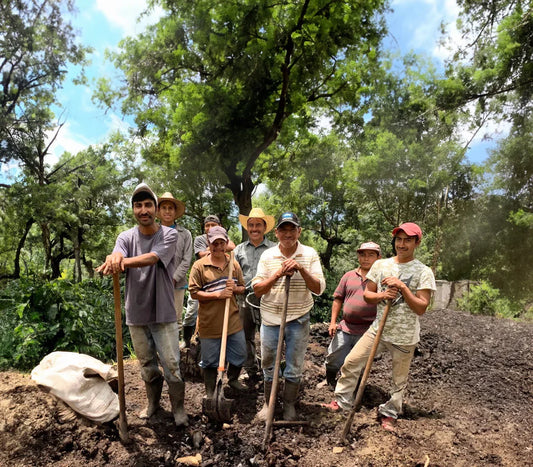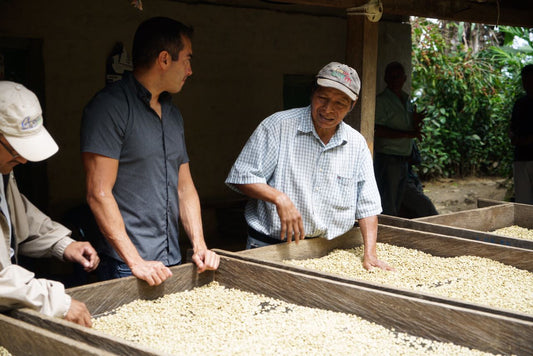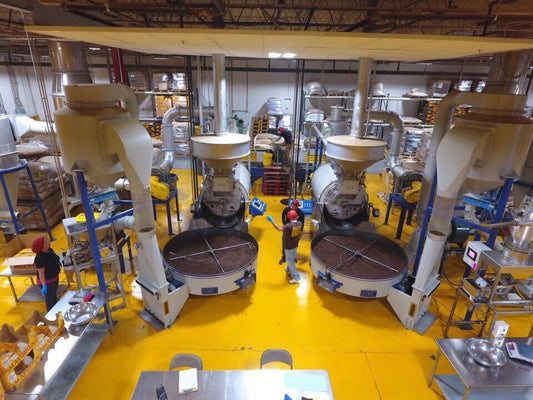
Do Latinos Prefer Coffee to Hot Chocolate?
Although hot chocolate has a longer history in the region, coffee has made its way into the hearts of Latinos as a symbol of heritage, comfort, and cultural significance.
Who doesn’t love a good cup of coffee or cocoa to warm the soul? Both drinks are comforting, tasty, and provide the perfect excuse to devour a delicious pastry.
They can be enjoyed in all seasons and, if you don’t mind staying up (or opt for decaf instead) they can be consumed at any hour of the day.
Those who live in Latin America are blessed by the fact that both coffee and cacao grow in abundance across the continent.
Of coffee, our countries are global powerhouses. Despite only arriving in the 18th century, we contribute more than half of the world’s supply and cultivate many of the most sought-after varieties, including Pacamara and Panamanian Geisha.
It is a similar story for cacao. Between 2015 and 2016, we produced an average of 744,000 tons, equivalent to nearly 20% of the total global output. When it comes to “fine” and “aromatic cocoa”, we are responsible for 80% of production, with a total of 198,000 tons exported in 2015 alone.
However, while hot chocolate remains a staple in many Latino households, coffee is nearly always a clear favorite. So why is this?

Xocolātl: An Ancient Latino Drink
For many of us, the earliest memory we have is drinking a sweet mixture of café con leche from a biberón. And, as we get older, it becomes a social glue and a way of connecting with our heritage.
“I started drinking a cafecito con leche y galletitas when I was five,” says Valeria Michel, who is from Mexico City. “By the time I was 13, it was straight black coffee.”
Indeed, a report published by the National Coffee Association of the USA showed that Latinos are the largest drinkers of "gourmet" coffee of any group and that more than 65% of Latinos had consumed coffee in the past 24 hours.
Coffee is certainly a staple in Latino culture, not just as a beverage but as a means of bringing people together. It is deeply ingrained in our social customs and daily rituals.
However, this was not always the case. Long before coffee arrived on the continent, something more akin to the hot chocolate we know today was consumed.
Known as xocolātl, this bitter-chocolate drink was derived from cocoa, which grew natively across much of Mesoamerica. It was widely consumed by the Mayas and those within the Aztec Empire. Similar to coffee, it was thought to raise mood levels and provide an energy boost.
From what we know, xocolātl was also consumed as a ceremonial drink, such as during religious occasions, and acted as a focal point for social gatherings. In this sense, it served a similar purpose to coffee today.
Why Coffee Became the Drink of Choice for Latinos
When coffee arrived in Latin America in the early 1700s, it quickly became a source of intrigue.
It soon became apparent that many of the region’s highlands were perfectly suited to growing the crop, with an ideal climate and fertile volcanic soil lending themselves to strong yields.
As coffee production in Latin America grew, consumption also became more widespread. Although hot chocolate continued to be an important drink, coffee began to surpass it as it became more readily available and was sought-after for its stimulating effects.
As time went on, coffee became much more than a drink with the ability to bring people together and stimulate conversations. The combination of social experience and exquisite flavor has made it a vital part of our culture and identity, whether we're sipping on a cortado at a bustling café or sharing a cafecito with our abuela, it has a way of creating long-lasting memories.
We love the taste, the experience, the comfort that it brings. But more than that, we love the cultural significance of coffee. It's a symbol of our heritage, a reminder of where we come from and the traditions that make us who we are.
That’s not to say, however, that coffee and hot chocolate are mutually exclusive. Those who enjoy coffee can also enjoy a cup of hot chocolate. In fact, the enduring love of hot chocolate is reflected in the various ways in which Latinos prepare it.
In Mexico, for example, they love their cocoa spiced up with cinnamon sticks and chili powder, while traditional Colombian hot chocolate (which has a slightly more bitter flavor rather than sweet) is typically made with tablets of pure dark chocolate and even a dollop of cheese.
A warm cup of both coffee and hot chocolate can be a loyal companion to help keep you up and comfort you whatever the occasion.
For the best organic coffee grown by Latinos, check out Mayorga Coffee’s range of specialty single origin coffees and coffee blends.


